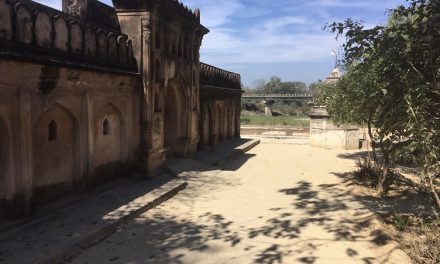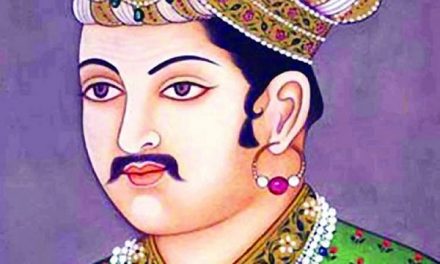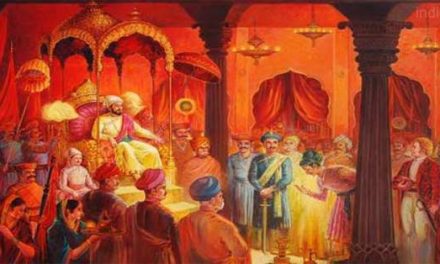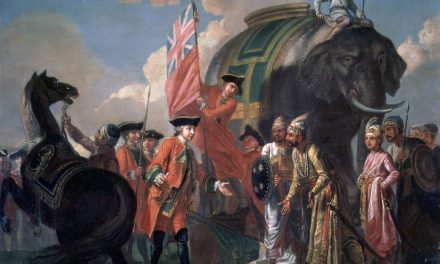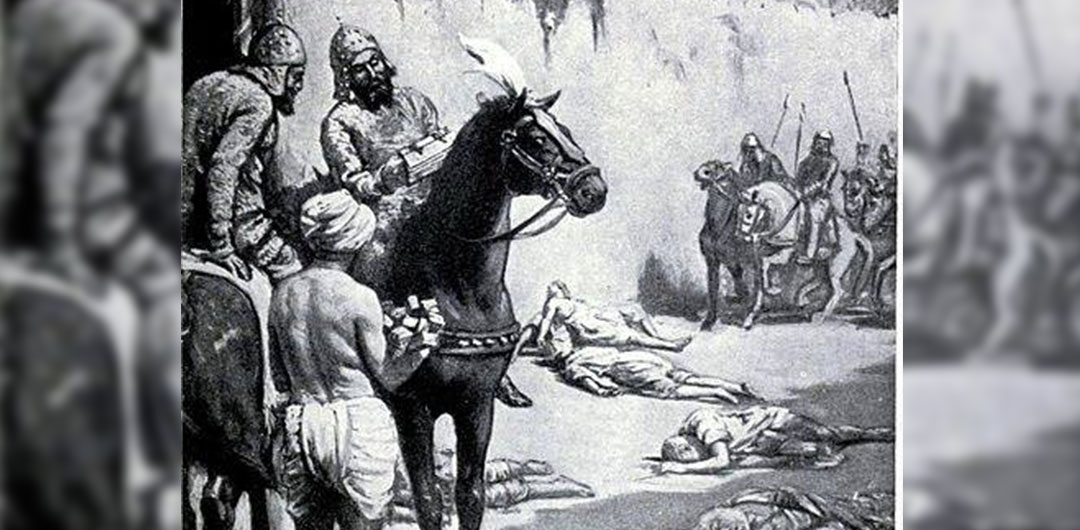
Ikhtiyar al-Din Muhammad bin Bakhtiyar Khilji, also known as Muhammad Bakhtiyar Khilji, has been depicted both as a hero of Muslim conquest in Bengal and a destroyer of the great universities in Nalanda, Vikramshila and Odantapuri in present-day Bihar. It is still uncertain if he was truly the destroyer of Nalanda, but people still consider him to be that. Unlike most rulers of that time, Bakhtiyar Khilji was of common birth, from the town of Garmsir, in Helmand province of Afghanistan. He was a military general who was a member of the Khalaj tribe, a Turkic tribe that long settled in the southern part of Afghanistan. They referred the people to as ‘Kalaje’, which later became ‘Khalji’ or ‘Khilji’ in India. Under his leadership, the military force conquered parts of eastern India at the end of the 12th Century and at the beginning of the 13th Century. It is said that Khilji’s conquest of Bengal at the head of eighteen or seventeen horsemen was foretold.
In his early days, Bakhtiyar Khilji wanted to enter the army. However, because of his short physical stature and arms that extended below the knees, he was refused rank. He tried his luck in the court of Ghazni, but got rejected there too. Later, he approached Muhammad Ghori in Delhi but was turned away again. He went to Oudh after a short while, where Malik Husam al-Din, acknowledged him for his worth. They granted him a ‘jagir’, landed estate, by Husam in Mirzapur district. A contemporary historian, Minhaj-i-Siraj, mentioned that despite his slender physical appearance, Khilji was active, bold, brave, intelligent and agile. His fortune and ambition and daredevil attitude helped him establish his power in Mirzapur very quickly. He strengthened his army by recruiting fierce Muslim soldiers and confidently eyed the riches of Bihar and Bengal that lay beyond. He carried out a commando operation and successful raids in the neighbouring regions and became more powerful. He reinforced his power and moved towards becoming the ruler of Bihar, staining his reputation alongside. His next aim was to capture Bengal and expand Muslim rule there.
In 1204 AD, Khilji decided to attack Nadia, in present-day West Bengal, one of the capitals of Lakshmana Sena, the last major Sena king of Bengal. Instead of taking the primary route, sensing that Lakshmana Sena had prepared strong troops anticipating his attack, he strategically took a different route- through Jharkhand forest. However, Bakhtiyar advanced so rapidly that only 18 of his horsemen could keep up. Since that end was not guarded, Bakhtiyar could easily enter and took Lakshmana Sena by surprise. He successfully pulled off the conquest with his entire army, the rest of which joined within a short while. Bakhtiyar Khilji was victorious, making Lakshmana Sena flee from his land. Nadia was then Bakhtiyar’s territory, but he left Nadia later and continued his conquests of expanding Muslim rule. He brought different parts of Bengal under his sway and introduced the reading of the Khutbah (Friday sermon), and the coining of money, and founded mosques, colleges and monasteries in several areas. However, there were a few factors that aided his achievement, which should not be left unsaid.
Before this invasion, the Sena Dynasty was not at its peak. Lakshmana Sena was over 80 years old, and his grasp on his kingdom was weakening by the minute. The people under the Sena Dynasty were relentlessly tortured by the Zamindars for tax which they were unable to provide. Many Buddhists and Hindus suffered around this time because of the system, and thus most of them chose to convert to Islam. The Sufis preached the religion and helped in the conversion. All these made Bakhtiyar’s win easy, since a lot of the people were already inclined towards Islam and did not put up a fight after the invasion. Bakhtiyar then moved towards Lakshmanavati near Gaur, another capital of the Sena kingdom, after Nadia. He conquered it and made it his capital in 1205 AD, which later came to be known as Lakhnauti to the Muslims.
Despite getting much of Bengal under his clasp, Khilji was not content. He ambitiously eyed the ‘forbidden land’ of Tibet and wanted it to be his next conquest. His plan to take on that conquest was questioned by many, but they did not realize what Khilji was aiming for. Khilji had three things in mind while planning this invasion. Tibet was a treasure filled with a possession that would strengthen his army beyond measure -horses. Securing this route would have helped him control that trade. Bengal already had business relations with Tibet along the “Tea-Horse-route” through Assam, Sikkim and Bhutan and Khilji wanted to bring the entire system under him. Taking over Tibet would also have been a gateway to the silk route between China and Central Asia, which would be under his reign. It would have been a tough conquest, but he was willing to risk it.
In 1206 CE, Khilji amassed a large army to invade Tibet, leaving Ali Mardan Khilji to watch over the eastern outskirts from his central command. With 10,000 soldiers, Khilji proceeded towards the most ambitious campaign of his life. Unfamiliar with the rugged Himalayan terrains, Khiljis’s forces had a hard time passing through, despite facing little to no resistance from the Tibetans, which was rather suspicious. It all made sense when the invading army was attacked with brute force and was successfully lured into their trap. The Tibetans wreaked havoc in the battlefield, and Khilji decided to retreat. But that was not all Khilji’s troops faced- throughout the journey back, the Tibetans relentlessly carried out assaults on his army. Again, that was not the end of the battle. Little did Khilji know, his stop at North Bengal awaited a new story. The Kamarupa army of Assam ambushed Khilji and his men. A lot of his men drowned and died while crossing the Brahmaputra and Teesta rivers. He had to return to Bengal in poor health and with a reduced army of only 100 men.
Upon returning to Devkot, some say present-day Dinajpur district, after the most disastrous episode of his life, Khilji fell ill. He was depressed and bedridden, and it is said that he did not even leave his bed when his generals turned their backs on him. It was during this time, when one of his principal generals, Ali Mardan Khilji, came to Devkot and stabbed him to death. Unfortunately, such a valiant leader met such a tragic end. Having said so, there is a lot about Muhammad Bakhtiyar Khilji that we do not appreciate.
Muslim rule began in Bengal because of Bakhtiyar Khilji, which lasted for more than five hundred years from 1204 AD to 1757 AD. After his death, the Delhi Sultans wanted to take control but failed. This led to Bengal being mostly under the control of Turkish rulers and later the Mughals. Khilji was not just a warrior conquering kingdoms and looking for a fortune. He started a chronicled change. This change was not only an adjustment in an empire or one king overthrowing another. He found a way to set up a new administration. This administration perceived social balance and communal harmony based on Muslim conventions and culture. It was because of him that Muslim rulers took steps to popularize the traditions of Islam later. His rule inflicted positive changes in society, and Muslim rule was accepted and owned by most. People still visit his tomb in Kaimur district of India from time to time, with candles and lamps, to pay respect to his work.
Al Mahmud, a Bangladeshi poet, depicted him as a praiseworthy hero of Muslim conquest in Bengal in his book of poetry titled Bakhtiyarer Ghora (Horses of Bakhtiyar). He was a wise warrior and businessman who strategically measured his every step to achieve his goals. During his reign, numerous people converted to Islam in India. Even though he is a hero to Muslims in the subcontinent, many people still hold him responsible for the destruction of Nalanda. However, their idea is not entirely true; Khilji, in fact, was not at all responsible for the decline of Nalanda or the disappearance of Buddhists. Buddhism slowly vanished in India after the Pala rule. A Chinese Buddhist traveller, Yijing travelled throughout India in the 7th Century and observed the slow decay of his religion. He also noticed that Nalanda was not in the best of forms. During the time of the Palas, the conventional Mahayana and Hinayana types of Buddhism were instilled with Tantric practices involving secret ceremonies and magic. Many Hindu ideas started getting incorporated into the traditional system, including politics, morals and philosophies. Buddhism was ceasing to exist gradually. Hindu repression was the final blow. Therefore, whatever Khilji did, cannot be considered as a forceful overthrow of the religion in India. We also need to keep in mind that Khilji did not compel people to convert to Islam during his invasion. Over time, a large portion of people in the subcontinent was Muslim. It is not possible for so many people to follow a religion by force. They must have appreciated and enjoyed the traditions of Islam and thus converted.
Khilji began a revolution and succeeded without forcibly imposing religion upon thousands of people. Differences in the opinion of people lead to false allegations and misconception, and that is exactly what has happened in this case. It is about time we acknowledge the truth behind the stories of Bakhtiyar Khilji and clear our understanding regarding his motives. All the information about Ikhtiyar Uddin Bakhtiyar Khalji is collected from the book Tabakat-i-Nasiri by the Muslim historian Minhajuddin Shiraz. Bakhtiyar’s story of the conquest of Bengal, which he heard about forty years after his death, was recorded and history has been written based on it. It is clear from his descriptions that he originally recorded the conventional stories, which are the only evidence of the conquest of Bengal by the historians. So not all of Minhaj’s words can be correct.
We must realize that most of the stories we read about historical characters have no authentic documentation. They are either stories that have been passed on from ear to ear over time or information twisted to justify corrupted behaviour. Colonial politics is highly involved in the controversies that are created to legitimize corruption. It would be foolish to label a person based on information with proof. It is ideal to fully analyze a system and culture before we decide to put a title on a person.Thus, the title of a hero is a better fit to Bakhtiyar Khilji than a villain, and we must all recognize and appreciate his efforts and contributions in Bengal.
This image, in the chapter on India in Hutchison’s Story of the Nations edited by James Meston, depicts the Bakhtiyar Khalji’s massacre of Buddhist monks in Bihar, India. It is a COLONIAL propaganda.

